Springboot第一章:JavaConfig注解
Posted 王六六的IT日常
tags:
篇首语:本文由小常识网(cha138.com)小编为大家整理,主要介绍了Springboot第一章:JavaConfig注解相关的知识,希望对你有一定的参考价值。
开始快乐的学习Springboot吧,定一个小目标,12.15之前学完,学不完就。。。。。。

一、JavaConfig
- 为什么要使用 Spring Boot
Spring、SpringMVC 需要使用的大量的配置文件 (xml文件),还需要配置各种对象,把使用的对象放入到spring容器中才能使用对象,还需要了解其他框架配置规则。 - SpringBoot 就相当于不需要配置文件的Spring+SpringMVC。
常用的框架和第三方库都已经配置好,拿来就可以使用。 - SpringBoot开发效率高,使用方便。
1.1 JavaConfig
JavaConfig:使用 java 类做配置文件使用。
使用java类作为xml配置文件的替代,是配置spring容器的纯java的方式。
在这个java类中可以创建java对象,把对象放入spring容器中(注入到容器),
使用两个注解:
1)@Configuration :放在一个类的上面,表示这个类是作为配置文件使用的。
2)@Bean:声明对象,把对象注入到容器中。
举例:
新建一个项目-模块

pom.xml 分析
打开pom.xml,看看Spring Boot项目的依赖:
<!-- 父依赖 -->
<parent>
<groupId>org.springframework.boot</groupId>
<artifactId>spring-boot-starter-parent</artifactId>
<version>2.2.5.RELEASE</version>
<relativePath/>
</parent>
<dependencies>
<!-- web场景启动器 -->
<dependency>
<groupId>org.springframework.boot</groupId>
<artifactId>spring-boot-starter-web</artifactId>
</dependency>
<!-- springboot单元测试 -->
<dependency>
<groupId>org.springframework.boot</groupId>
<artifactId>spring-boot-starter-test</artifactId>
<scope>test</scope>
<!-- 剔除依赖 -->
<exclusions>
<exclusion>
<groupId>org.junit.vintage</groupId>
<artifactId>junit-vintage-engine</artifactId>
</exclusion>
</exclusions>
</dependency>
</dependencies>
<build>
<plugins>
<!-- 打包插件 -->
<plugin>
<groupId>org.springframework.boot</groupId>
<artifactId>spring-boot-maven-plugin</artifactId>
</plugin>
</plugins>
</build>
在pom.xml中添加依赖和插件:
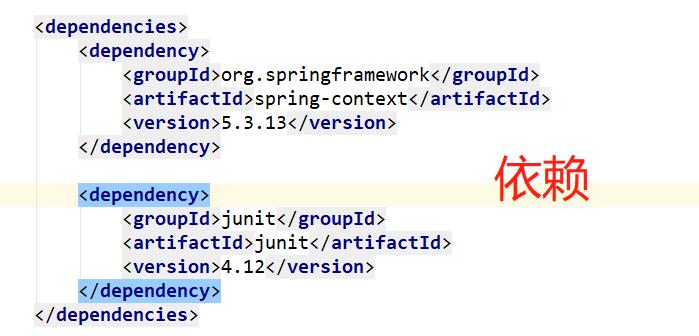
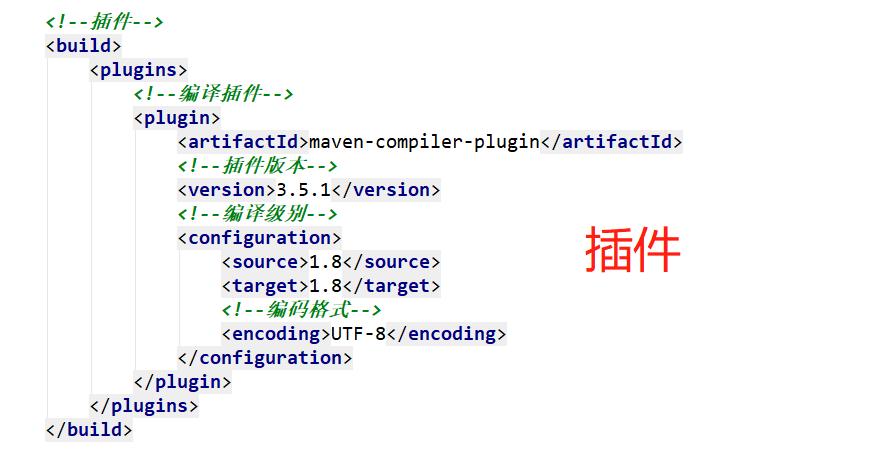
创建数据类Student

public class Student
private String name;
private Integer age;
private String sex;
public String getName()
return name;
public void setName(String name)
this.name = name;
public Integer getAge()
return age;
public void setAge(Integer age)
this.age = age;
public String getSex()
return sex;
public void setSex(String sex)
this.sex = sex;
@Override
public String toString()
return "Student" +
"name='" + name + '\\'' +
", age=" + age +
", sex='" + sex + '\\'' +
'';
把对象放进容器中需要一个配置文件:


<!--声明bean对象-->
<bean id="mystudent" class="com.bjpowernode.vo.Student">
<!--给属性赋值-->
<property name="name" value="王六六"/>
<property name="age" value="19"/>
<property name="sex" value="女"/>
</bean>
在容器中已经有这个对象,怎么拿到这个对象?

/**
* 1.使用xml作为容器配置文件
*/
@Test
public void test01()
String config = "beans.xml";
ApplicationContext ctx = new ClassPathXmlApplicationContext(config);
Student student = (Student) ctx.getBean("mystudent");
System.out.println("容器中的对象:" + student);

使用java类来代替beans.xml文件=====>JavaConfig
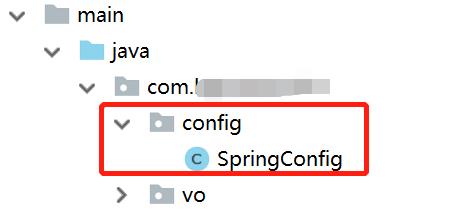
SpringConfig这个类就相当于配置文件beans.xml,用于配置容器对象
@Configuration
表示当前类是作为配置文件使用的,用来配置容器的
位置:在类的上面
@Bean
把对象注入到spring容器中。 作用相当于<bean>
位置:方法的上面
说明:@Bean不指定对象的名称,默认是方法名是 id
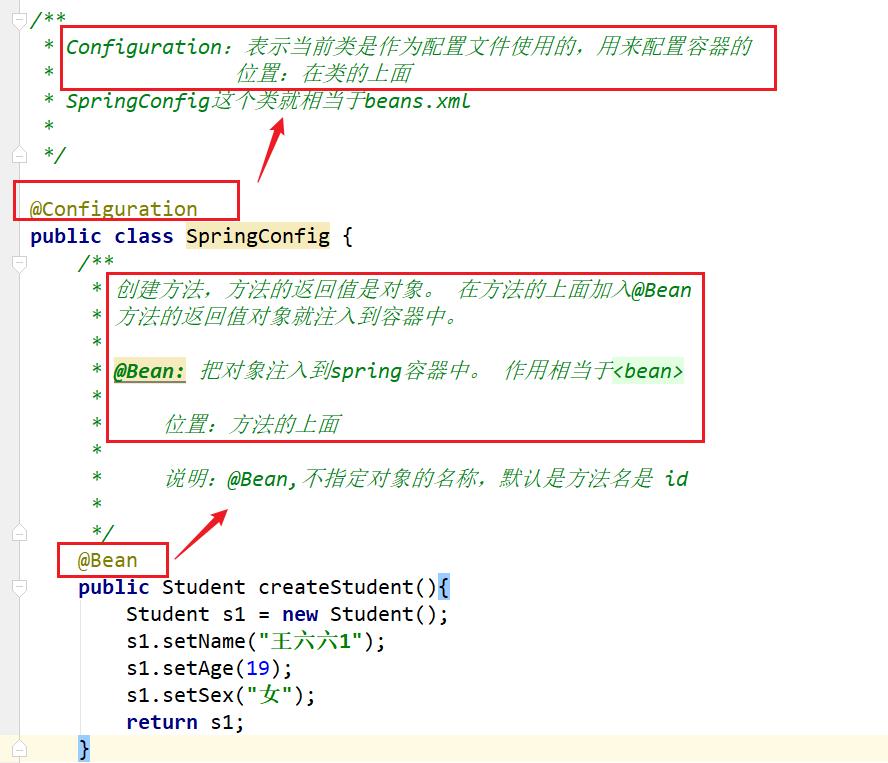
使用AnnotationConfigApplicationContext来创建对象,进行测试:
/*
* 2.使用JavaConfig
* */
@Test
public void test02()
ApplicationContext ctx = new AnnotationConfigApplicationContext(SpringConfig.class);
Student student = (Student) ctx.getBean("createStudent");
System.out.println("使用JavaConfig创建的bean对象:" + student);
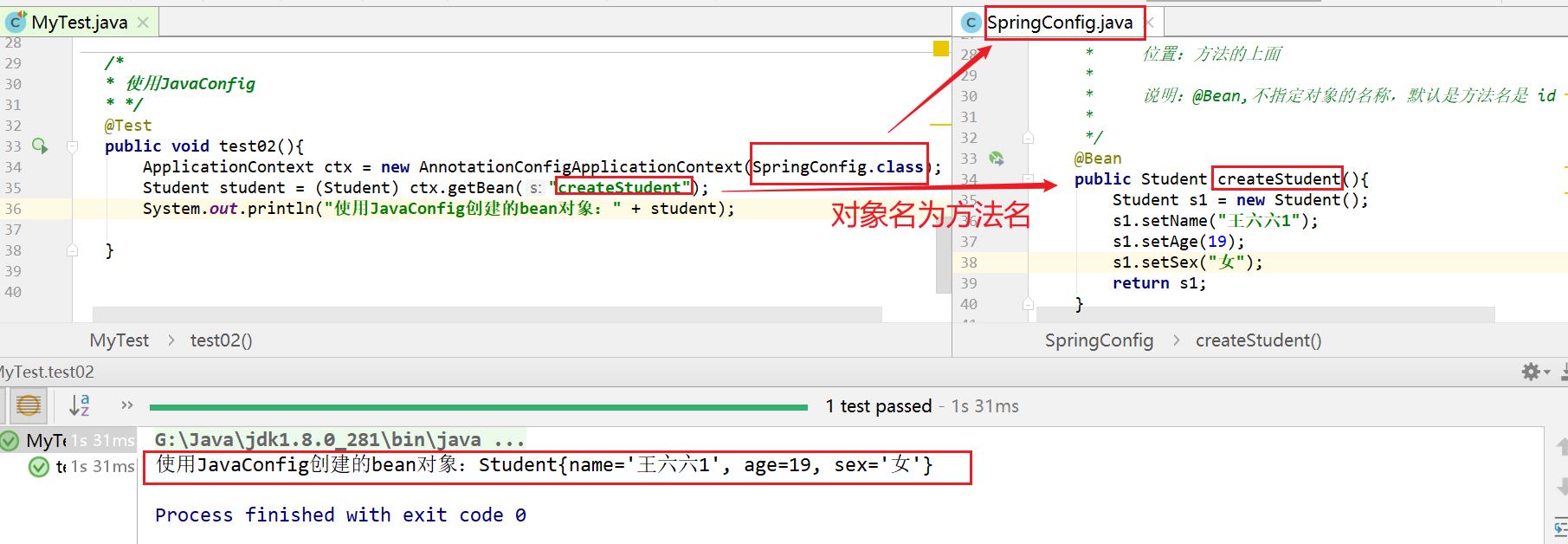
指定对象在容器中的名称(指定<bean>的id属性)
/***
* 指定对象在容器中的名称(指定<bean>的id属性)
* @Bean的name属性,指定对象的名称(id)
*/
@Bean(name="wzStudent")
public Student makeStudent()
Student s2 = new Student();
s2.setName("丸子");
s2.setAge(20);
s2.setSex("女");
return s2;
测试:
/*
* 使用JavaConfig
* */
@Test
public void test03()
ApplicationContext ctx = new AnnotationConfigApplicationContext(SpringConfig.class);
Student student = (Student) ctx.getBean("wzStudent");
System.out.println("使用JavaConfig创建的指定对象名称的bean对象:" + student);
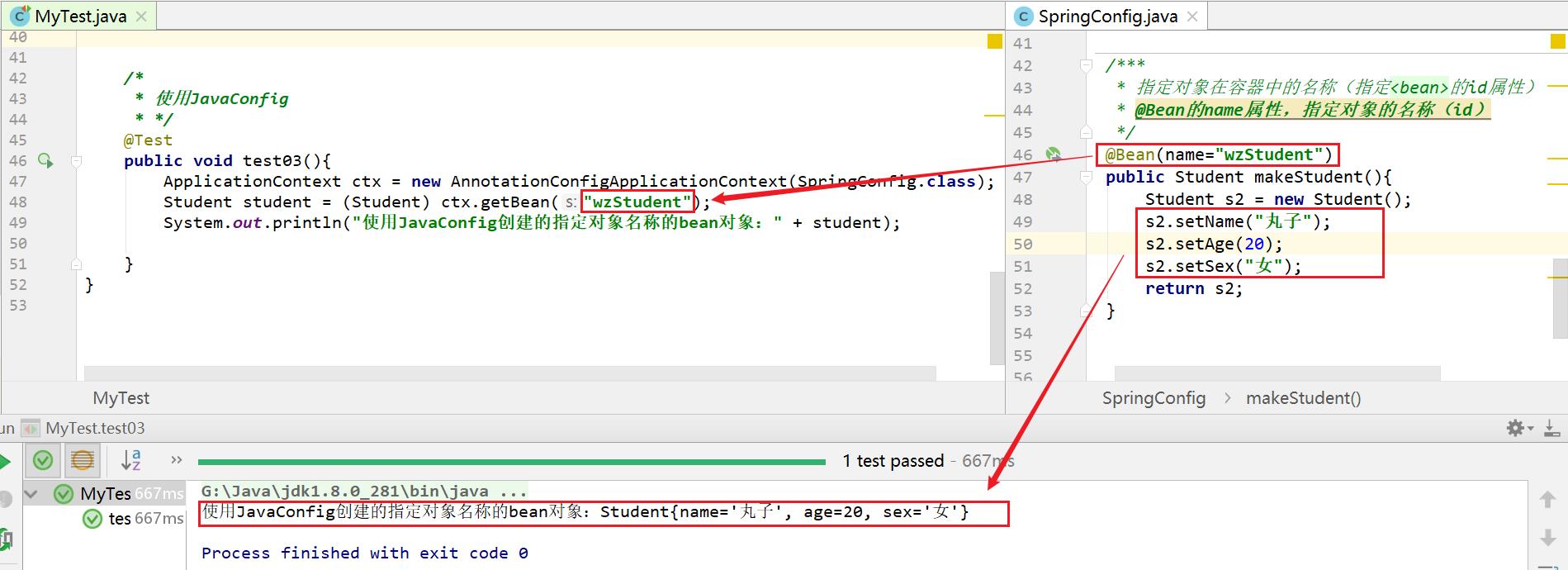
1.2 @ImporResource
@ImportResource 作用:导入其他的xml配置文件, 等于在xml
<import resources="其他配置文件"/>
@Configuration
@ImportResource(value = "classpath:applicationContext.xml","classpath:beans.xml")
public class SpringConfig
举例:
创建一个实体类:Cat

public class Cat
private String cardId;
private String name;
private Integer age;
public String getCardId()
return cardId;
public void setCardId(String cardId)
this.cardId = cardId;
public String getName()
return name;
public void setName(String name)
this.name = name;
public Integer getAge()
return age;
public void setAge(Integer age)
this.age = age;
@Override
public String toString()
return "Cat" +
"cardId='" + cardId + '\\'' +
", name='" + name + '\\'' +
", age=" + age +
'';
添加配置文件,在文件中声明这个Cat:

<bean id="myCat" class="com.bjpowernode.vo.Cat">
<property name="name" value="Tom猫"/>
<property name="age" value="2"/>
<property name="cardId" value="wz123456"/>
</bean>
把这个对象也放进容器中去:
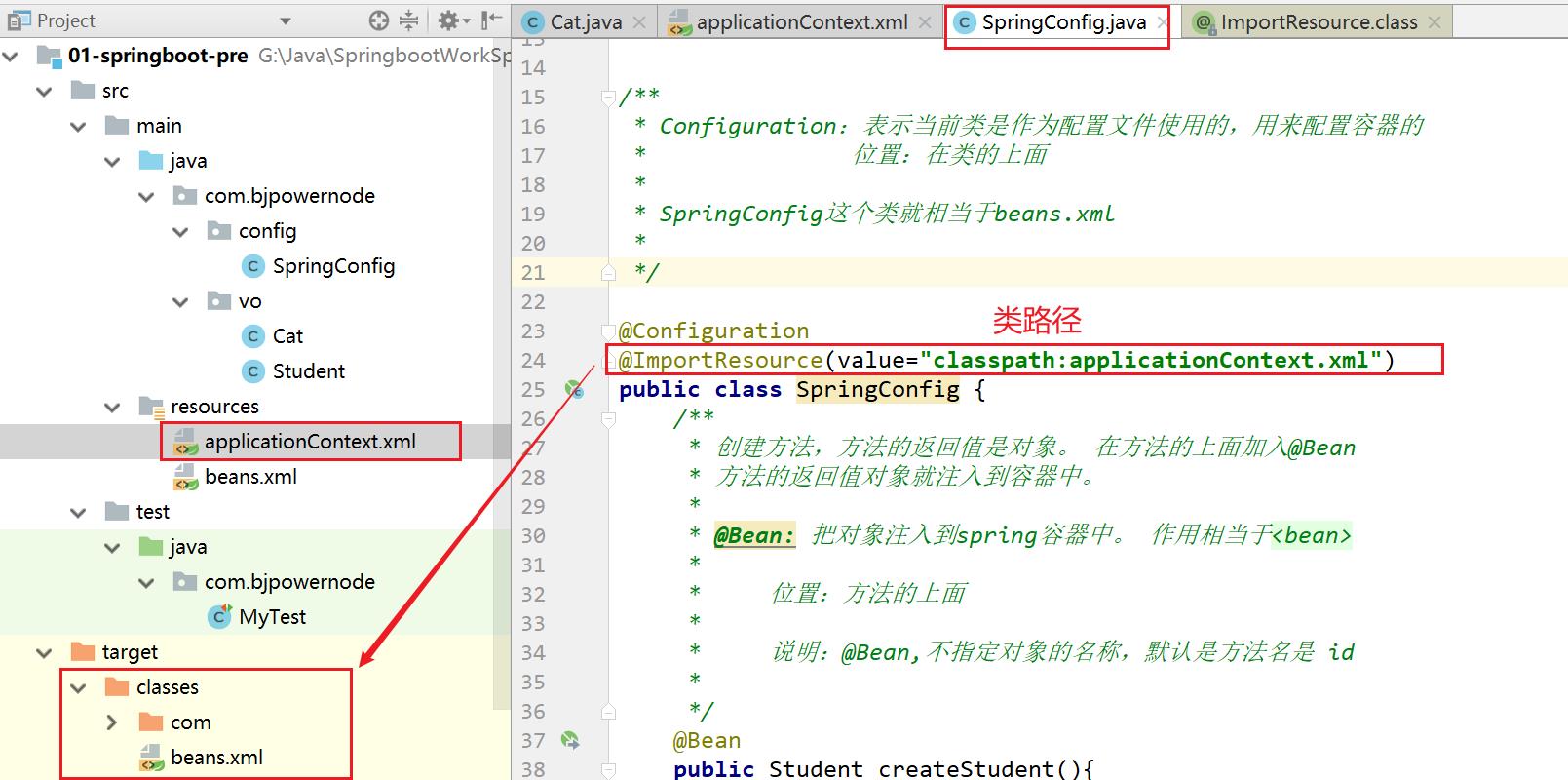
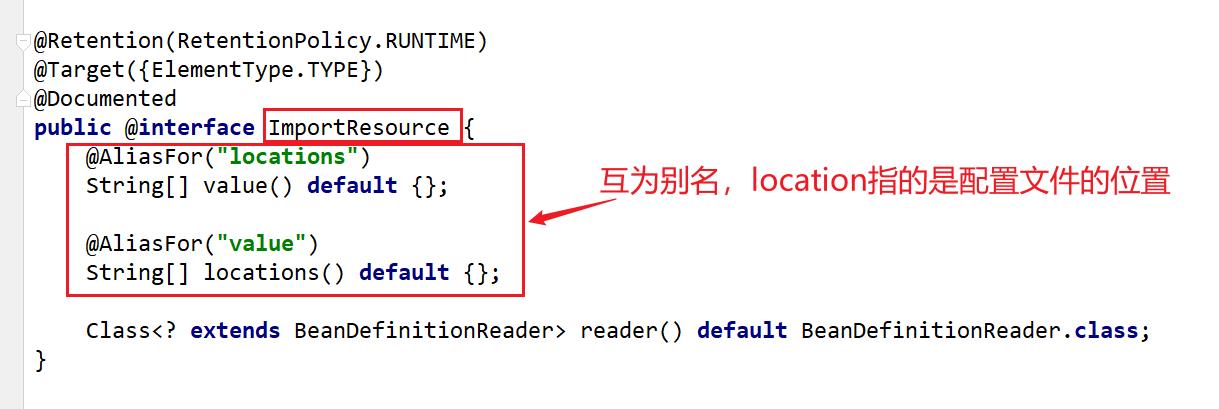
测试:
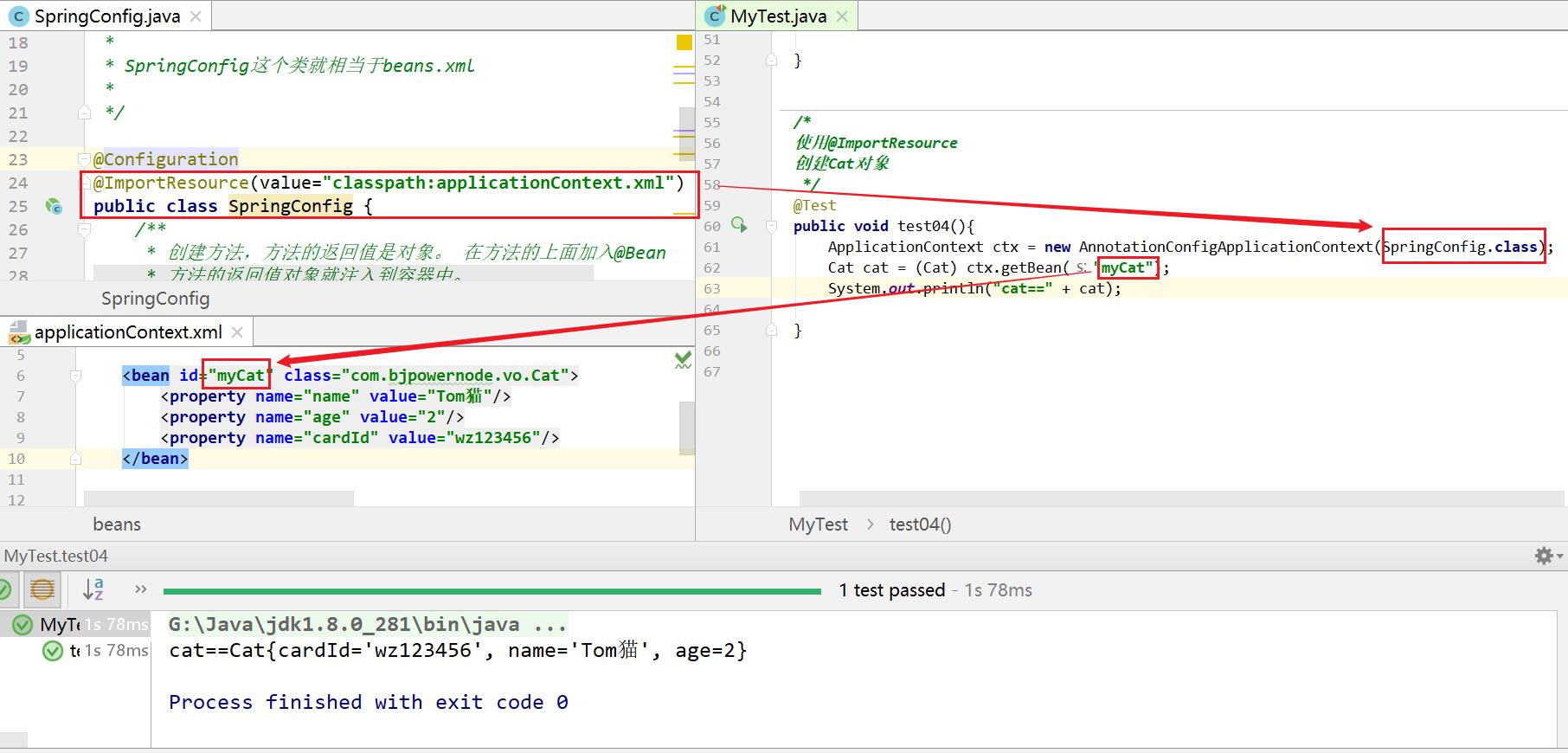
value为一个数组可以指定多个值即多个配置文件:

1.3 @PropertyResource
@PropertyResource:读取properties属性配置文件。
使用属性配置文件可以实现外部化配置 ,在程序代码之外提供数据。
使用步骤:
- 在resources目录下,创建properties文件, 使用
k=v的格式提供数据 - 在PropertyResource 指定properties文件的位置
- 使用
@Value(value="$key")
在vo包中创建一个实体类Wanzi:
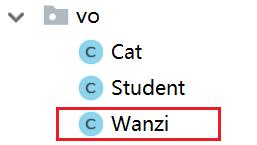
public class Wanzi
private String name;
private Integer num;
@Override
public String toString()
return "Wanzi" +
"name='" + name + '\\'' +
", num=" + num +
'';
名字和个数来自属性文件:
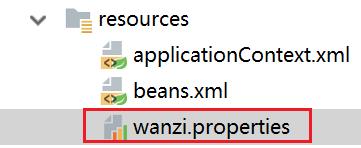

如果在properties文件中使用中文,则需要设置编码格式:
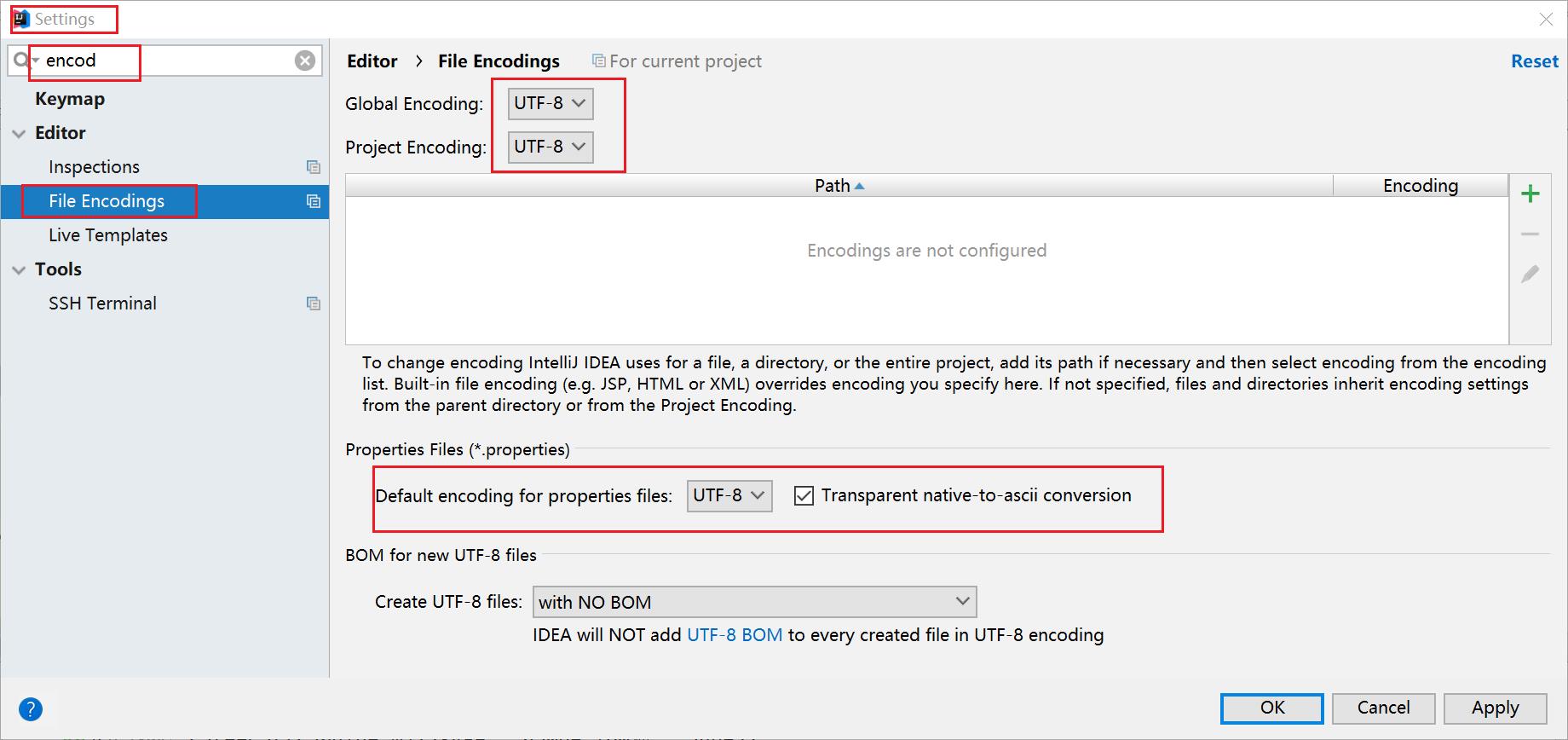
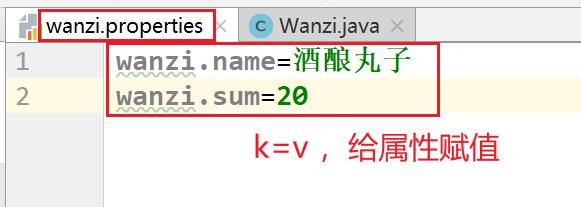
在Wanzi类之上使用@Component创建Wanzi这个类的对象:
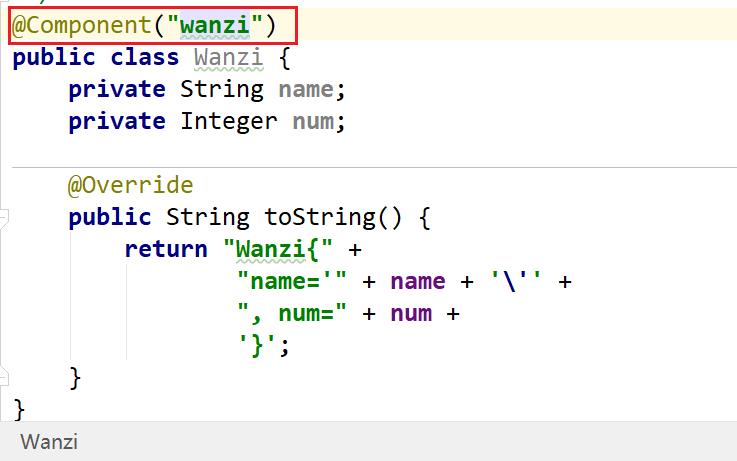
使用@Value("$ ")获取值:
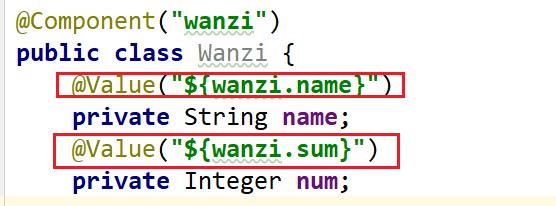
把对象放进容器中,需要指定属性文件,在SpringConfig类中使用@PropertySource可以使Spring框架读取wanzi.properties文件:

但wanzi这个对象是使用注解方式@Component创建的,需要告诉容器到哪儿去寻找这个wanzi对象即Wanzi上面的那个注解@Component,找注解有一个组件扫描器的标签或注解@ComponentScan。
ComponentScan源码:

一般使用包名。

测试:20个酒酿丸子
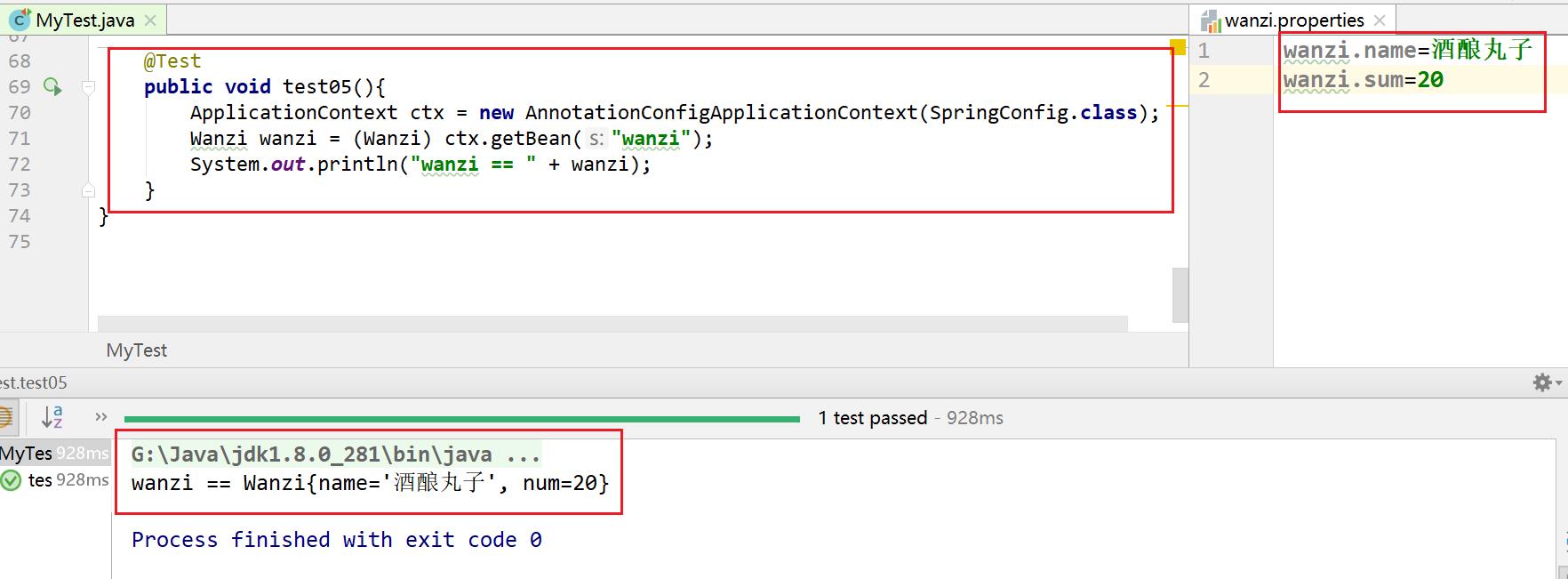


以上是关于Springboot第一章:JavaConfig注解的主要内容,如果未能解决你的问题,请参考以下文章